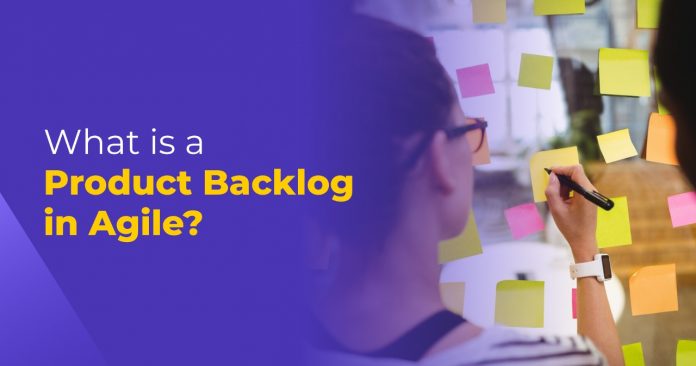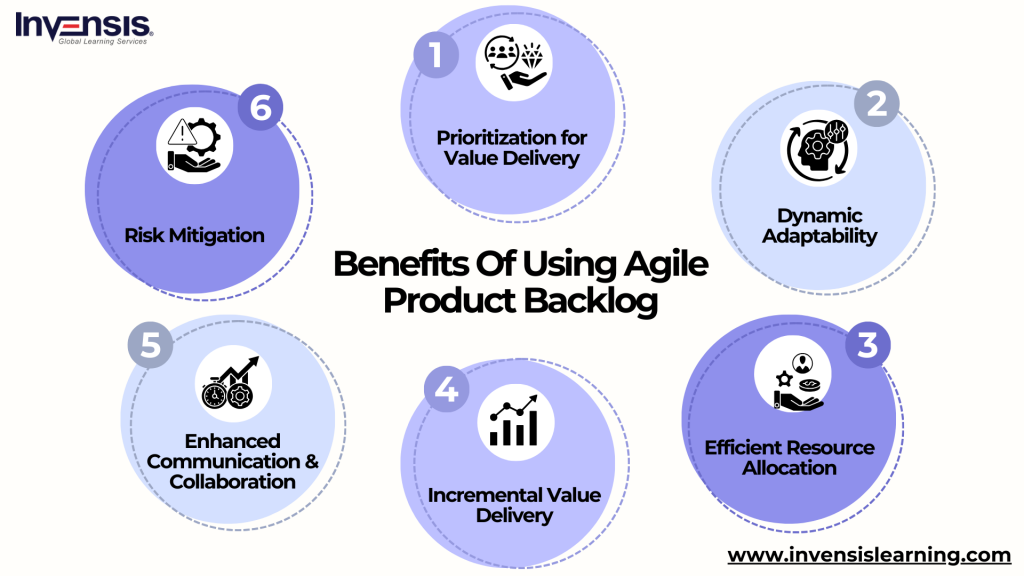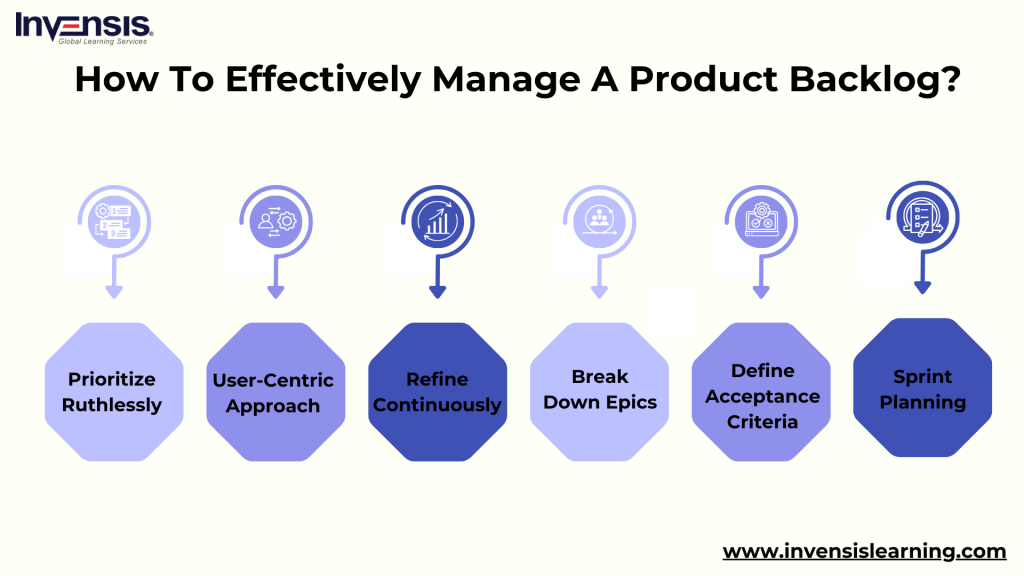
Embarking on the Agile journey requires a fundamental understanding of its core principles and practices. Among these, the Product Backlog is a cornerstone, wielding immense influence on the development process. Whether you’re a seasoned Agile practitioner or just setting foot in Agile methodologies, comprehending the significance of the Product Backlog is crucial.
In this blog, we’ll delve into the depths of the Product Backlog in Agile, unraveling its essence, purpose, and functionality.
By the end, you’ll grasp the concept of the Product Backlog and gain insights into its real-world application through illustrative examples. So, take a deep dive into this journey of complexities of the Product Backlog and uncover its role in steering Agile development projects towards success.
Table of Contents:
- What is a Product Backlog?
- Benefits of Using Agile Product Backlog
- Product Backlog Items with an Example
- How to Effectively Manage a Product Backlog in Agile?
- Agile Product Backlog vs. Sprint Backlog
- Conclusion
What is a Product Backlog?
A Product Backlog is a prioritized list of features, enhancements, bug fixes, and other work items that need to be addressed or implemented in a product. It is a key artifact in Agile and Scrum methodologies, popular software development frameworks, and project management frameworks.
The Product Backlog serves as a dynamic document that evolves, reflecting the changing needs and requirements of the product. It is typically managed by the Product Owner in collaboration with stakeholders and the development team. The items in the backlog are often described in user stories, which are brief narratives that capture the perspective of an end-user or customer.
The key characteristics of a Product Backlog include:
- Prioritization
- Dynamic Nature
- Collaboration
- Estimation
- Transparency
In the Scrum framework, the Product Backlog is one of the three key artifacts, along with the Sprint Backlog and the Increment. It plays a crucial role in guiding the development team in delivering increments of a product in a flexible and iterative manner.
Benefits Of Using Agile Product Backlog
The Agile product backlog is a dynamic and prioritized list of features, improvements, and bug fixes that need to be addressed in a product. It serves as a central repository for all the work that needs to be done, and it plays an important role in Agile development methodologies, such as Scrum.
Here are some benefits of using a product backlog in Agile:
- Prioritization for Value Delivery: The Product Backlog enables teams to prioritize tasks based on business value, ensuring that the most crucial features are addressed early in the development cycle. This approach maximizes customer satisfaction by delivering high-value functionality sooner.
- Dynamic Adaptability: The Product Backlog’s dynamic nature allows quick adaptation to changing requirements, market conditions, or unexpected insights. This adaptability ensures that the team can promptly respond to changing project needs, minimizing the potential for delays or misalignments.
- Efficient Resource Allocation: The Product Backlog assists in efficient resource allocation through prioritization and estimation. Teams can plan and allocate resources effectively, optimizing productivity and preventing resource-related back-ups.
- Incremental Value Delivery: Agile teams provide incremental value with each iteration by delivering high-priority items early in the development process. This approach allows for the timely release of valuable features, meeting user needs sooner, and facilitating quicker feedback loops.
- Enhanced Communication and Collaboration: The collaborative ownership of the Product Backlog promotes effective communication and alignment among team members, the Product Owner, and stakeholders. Regular refinement sessions foster a communicative environment, ensuring everyone is informed and engaged.
- Risk Mitigation: The adaptability of the Product Backlog contributes to effective risk mitigation. Teams can promptly address emerging challenges, adjusting priorities and plans to navigate uncertainties and ensure project success.
These benefits collectively contribute to the success of Agile development projects by fostering a responsive, collaborative, and value-driven approach to software development.
Product Backlog Items with an Example
Product Backlog Items (PBIs) are individual elements or tasks that make up the Product Backlog. They are typically user-focused and written in a way that describes functionality or features from an end user’s perspective.
Here is an example of one of the Product Backlog Items in a project:
- User Story
As a mobile user, I want to receive push notifications for new messages in the messaging app to stay updated on conversations even when the app is not open.
- Feature Request
Implement a dark mode option in the settings to provide users with a visually appealing and energy-efficient alternative to the default light mode.
- Bug Report
Users are experiencing a lag when switching between tabs in the application. Investigate and fix the performance issue to ensure a smooth and responsive user experience.
- Infrastructure Improvement
Upgrade the server infrastructure to accommodate a growing user base and ensure the application’s scalability during peak usage.
- Compliance Requirement
Update the user data handling processes to comply with the new privacy regulations, including implementing a data anonymization mechanism and giving users more control over their data.
This example covers a range of Product Backlog Items, including user-centric features, bug fixes, infrastructure improvements, and items addressing compliance and regulatory requirements. The prioritization of the above items would depend on factors such as user needs, business priorities, and technical considerations.
Master Agile methodology with Invensis Learning’s top Agile Certification Courses! Enroll Now!
How to Effectively Manage a Product Backlog in Agile?
Effectively managing a product backlog is crucial for successful Agile and Scrum development.
Prioritize ruthlessly, adopt a user-centric approach, continuously refine, break down epics, define acceptance criteria, and engage in focused sprint planning for a streamlined and user-focused development journey.
Here are some key practices to help you effectively manage a product backlog in Agile:
-
Prioritize Ruthlessly
Regularly review and prioritize items based on business value, customer needs, and strategic goals. Employ techniques like MoSCoW prioritization or a numeric system to assign priority levels, ensuring the team focuses on the most crucial tasks first for optimal project outcomes.
-
User-Centric Approach
Express backlog items as user stories to maintain a user-centric perspective. Clearly define the “who,” “what,” and “why” for each item, fostering a focus on delivering tangible value to end-users. This approach ensures that every development effort directly enhances the user experience.
-
Refine Continuously
Conduct regular backlog refinement sessions to refine, clarify, and add detail to backlog items. This ongoing process ensures that each item is well-defined, attainable, and ready for implementation. Continuous refinement supports adaptability and keeps the backlog aligned with evolving project needs.
-
Break Down Epics
When faced with large and complex items (epics) in the backlog, break them into smaller, more manageable tasks or user stories. This approach facilitates better estimation, planning, and execution, allowing the team to tackle one piece at a time and ensuring a more agile and responsive development process.
-
Define Acceptance Criteria
Clearly articulate acceptance criteria for each backlog item. Defining the conditions that signify when a particular item is considered “done” is essential. This clarity helps in aligning development efforts with stakeholder expectations, promoting a shared understanding of success criteria.
-
Sprint Planning
During Sprint Planning meetings, select a subset of items from the top of the backlog to work on in the upcoming sprint. This deliberate selection ensures a focused and achievable set of goals for each iteration. Sprint Planning aligns the team’s efforts with immediate priorities, enhancing efficiency and goal-oriented development.
These practices encompass aspects of prioritization, user focus, continuous refinement, effective breakdown of work, clear definition of expectations, and alignment with sprint planning – all of which contribute to a well-managed and effective product backlog.
Agile Product Backlog vs. Sprint Backlog
The Agile Product Backlog is a dynamic list owned by the Product Owner, containing all features for the product. It evolves continuously and guides long-term planning.
In contrast, the Sprint Backlog is a subset managed by the Development Team for a specific sprint, with fixed content during the sprint, focusing on short-term planning and achieving sprint goals.
The table below depicts the differences between Agile Product Backlog and Sprint Backlog:
| Aspect | Agile Product Backlog | Sprint Backlog |
| Purpose | Dynamic and prioritized list of all features, enhancements, and work items for the entire product lifecycle | Subset of the Product Backlog for a specific sprint, containing tasks committed to during that sprint |
| Owner | Product Owner | Development Team |
| Content | Wide range of items, including user stories, bug reports, feature requests, and more | Selected user stories and tasks for the sprint, broken down into smaller units of work |
| Dynamic Nature | Continually refined and updated to reflect changing requirements, priorities, and feedback | Fixed once the sprint begins, with changes typically avoided during the sprint to maintain focus |
| Planning Tool | Guides overall product development and is used for long-term planning | Guides the development team’s work during a specific sprint for short-term planning |
This table highlights the key differences between the Agile Product Backlog and the Sprint Backlog, emphasizing their respective purposes, ownership, content, dynamic nature, and roles as planning tools in Agile development.
Conclusion
In the domain of Agile methodologies, the Product Backlog emerges as a vital roadmap, dynamically curated by the Product Owner to prioritize evolving product needs. The benefits of using a product backlog in Agile, including value-driven prioritization and dynamic adaptability, play a pivotal role in leading Agile development projects towards success.
Effective Agile project management involves strategic practices like ruthless prioritization and user-centric approaches, aligning with the overarching Agile framework. Distinguishing it from the Sprint Backlog, which hones in on short-term goals during a specific sprint, the Product Backlog serves as the compass for long-term planning.
For individuals seeking to enhance their understanding of Agile project management, the Invensis Learning Agile Project Certification Courses serve as a valuable resource.
















